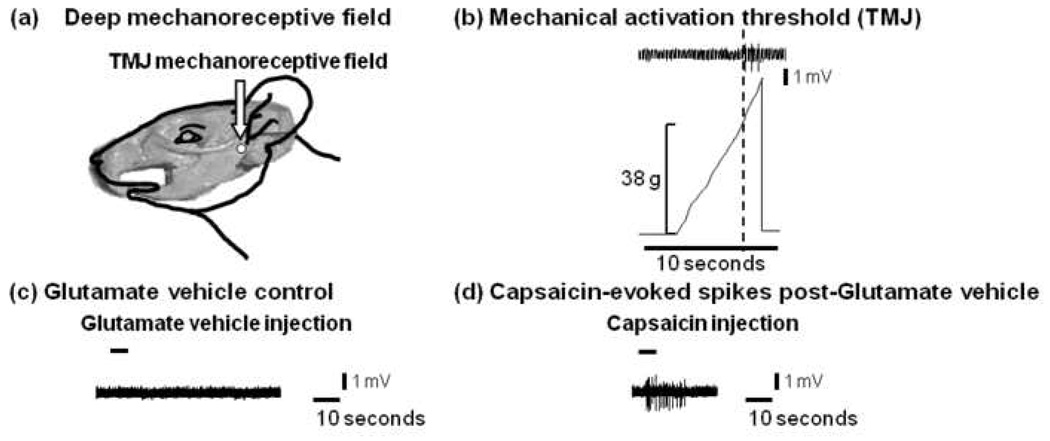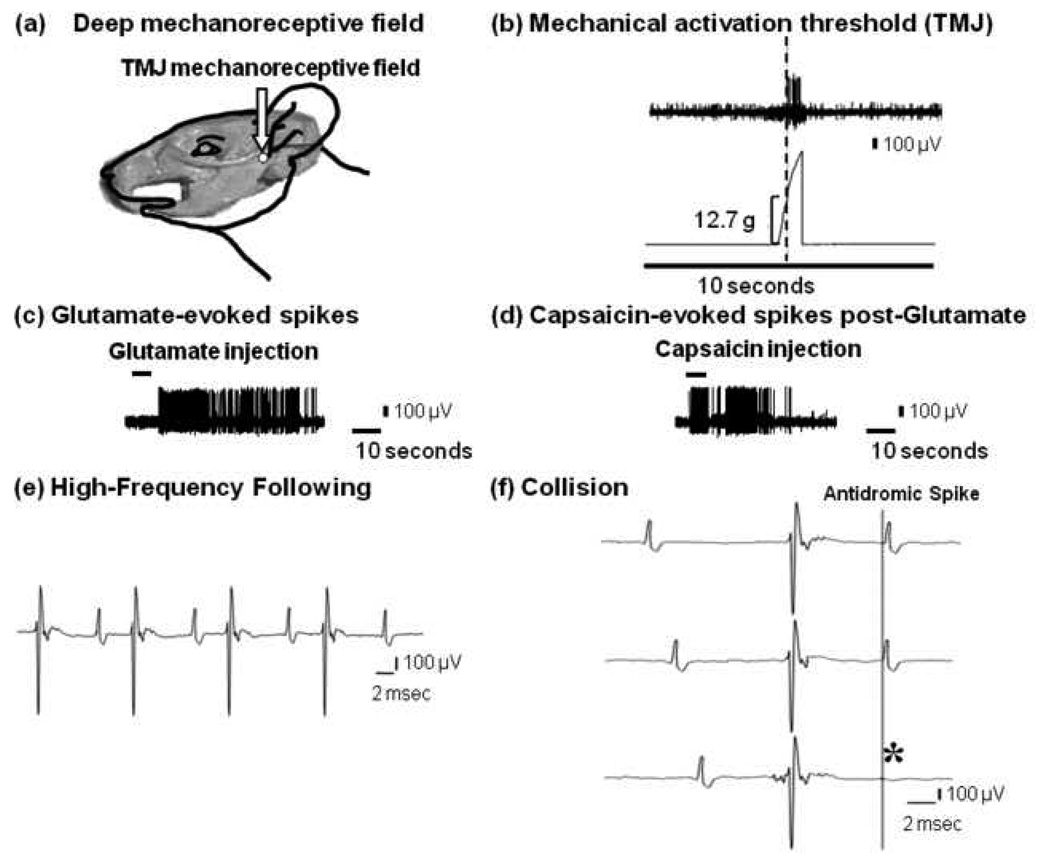Fig. 1.
Fig. 1A. Example of typical mechanoreceptive field and response properties of deep craniofacial nociceptive afferent to injection of glutamate vehicle followed by capsaicin (CV=2.8m/s, MAT=38 g, Aδ-fiber TMJ afferent). (a) Deep mechanoreceptive field (white circle) of nociceptive afferent involving the TMJ region indicated by arrow, (b) Afferent mechanical activation threshold determined with von Frey device, (c) No response in this afferent was evoked by injection of glutamate vehicle into the TMJ, (d) Afferent response evoked by injection of capsaicin following glutamate vehicle into the TMJ.
Fig. 1B. Example of typical mechanoreceptive field and response properties of deep craniofacial nociceptive afferent to injection of glutamate followed by capsaicin (CV=2.0m/s, MAT=12.7 g, C-fiber TMJ afferent). (a) Deep mechanoreceptive field (white circle) of nociceptive afferent involving the TMJ region indicated by arrow, (b) Afferent mechanical activation threshold determined with von Frey device, (c) Afferent response evoked by injection of glutamate into the TMJ, (d) Afferent response evoked by injection of capsaicin following glutamate into the TMJ, (e) Stimulation of Vc/UCC (50 µs, 50 µA, 100 Hz) evoked an antidromic action potential (latency: 6.0ms). By measuring the distance between the recording electrode and the stimulating electrode in Vc/UCC and dividing by the antidromic latency, the CV of this afferent was estimated to be 2.0 m/s, (f) Blunt mechanical stimulation of the TMJ tissue was used to evoke orthodromic spikes that served as a trigger for electrical stimulation of Vc/UCC (antidromic spike). Shortening the delay between the orthodromically evoked spike and the electrical stimulus applied to Vc/UCC resulted in a collision, as evidenced by the disappearance of the antidromic spike.


